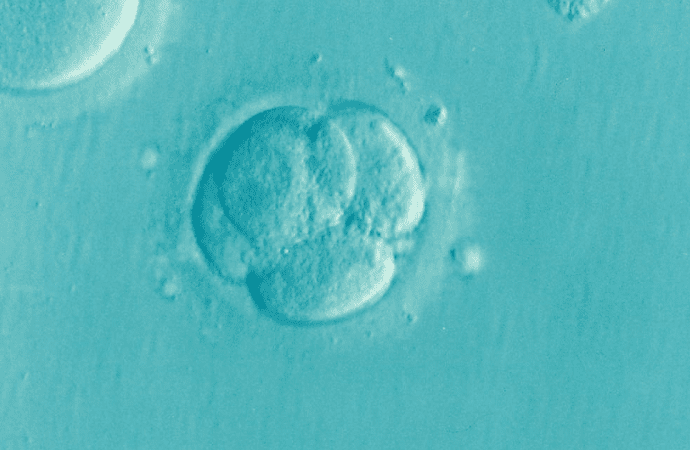Since the birth of the first baby by in vitro fertilization (IVF) in 1978, the procedure has been hailed as a major medical breakthrough which has become a multimillion-dollar global enterprise.
However, while the technique continues to provide hope for many wishful couples who might not otherwise become parents, experts have warned that there is a lack of scientific research into the phenomenon of infertility itself, and that due to high demand and the money it generates, IVF could be overused.
In comments to Crux, Professor Giuseppe Noia - Director of the Italy-based Perinatal Hospice at the A. Gemelli University Polyclinic Foundation I.R.C.C.S. and founder and president of the Il Cuore in una Goccia non-profit foundation - said there are not enough scientific studies on infertility and natural alternative treatments.
“There are many studies, but all of them are aimed at justifying artificial fertilization,” he said. “There are not a lot of studies that (explore) alternatives to artificial fertilization.”
Noia, a gynecologist and expert in prenatal care, was among the speakers attending a May 23-25 conference in Rome titled, “Yes to Life: Caring for the precious gift of life in its frailness.”
Organized by the Vatican department for Laity, Family and Life together with the Pontifical Academy for Life, the event was sponsored by the Knights of Columbus and Noia’s non-profit, drawing experts from around the world to discuss issues related to pregnancy and prenatal care.
In his comments to Crux, Noia, who spoke on the opening day of the conference, voiced concern over the lack of proper studies of the long-term effects of IVF, on both the women who use it and the children conceived through the process.
According to a 2017 report from the U.S. Society of Assisted Reproductive Technology (SART), around one million children have been born through IVF procedures between 1987 and 2015. Of these, only 21.3 percent result in a full-term pregnancy with a normal birthweight.
Statistics from the Italian Ministry of Health show that 91 percent of IVF cycles lose all of the embryos conceived, creating ethical concerns, and some nine percent of children born from an IVF procedure are recorded to have higher chances of malformation, chromosomal alterations, premature births or being underweight at birth.
Data collected from studies on IVF show that there is also a higher risk of pre-eclampsia and higher blood pressure and/or glucose levels, and general vascular dysfunction for children conceived through the process.
The studies also have shown that women who choose to undergo IVF also tend to develop varying levels of psychological distress at having lost the embryos created during the procedure.
Couples often go through multiple rounds of IVF before they conceive, and on average four embryos are created and implanted in the woman’s uterus in each cycle, meaning most of these embryos will be lost before pregnancy occurs.
“There is a culture that wants to silence the relationship between the embryo and the mother,” Noia said, explaining that most scientific literature affirms the importance of the first seven to eight days after conception, when the embryo falls through the fallopian tube and is implanted in a woman’s uterus.
The “cross-talk” between mother and embryo that happens during implantation “is not unimportant,” but is essential “for a good placentation, a good fetal weight at birth and a good evolution in infancy, in adolescence and in adulthood,” he said, noting that some studies have also shown that children conceived through IVF tend to have “difficulty in defining their own identity” as they grow older.
“So, the ethical problem is, why propose a solution to infertility, but which brings these risks?” he said.
He cited a meta-analysis published in the British Medical Journal in January 2014 titled, “Are we overusing IVF?” in which the authors, after studying some 400 cases of artificial fertilization over time, suggest that couples should think twice about turning to IVF as a quick solution to infertility due to a lack of research and accurate statistics.
According to the analysis, “a lack of will to question the perceived success of IVF is preventing progress” in researching the procedure.
“Currently funding bodies seem to have limited interest in funding long term studies on safety,” the article said, noting that in many countries IVF has become “a profit generating industry that values the money brought in by immediate gains of pregnancy and live birth over long term considerations about the health of the mothers and children.”
The article holds that this is true for both private clinics and academic institutions, “which also benefit economically from the number of couples they recruit for fertility treatment.”
Neither the American Society for Reproductive Medicine nor the European Society of Human Reproduction and Embryology have guidelines on the use of IVF, it said. Many national fertility registries, including those in Sweden, Australia, Belgium, New Zealand, Canada and the United States, do not collect data on the duration of infertility.
“Given the rapid increase in uptake of IVF across the world, it is time to reconnect the drive to regulate practice with a drive to generate knowledge on best practice and long-term safety,” the article said, saying global society faces a choice of whether to continue offering “early, non-evidence based access to IVF” to couples who have decent odds of conceiving naturally, or to follow “a more challenging path to prove interventions are effective and safe.”
“We are over-using IVF,” Noia said, explaining that at Rome’s Gemelli hospital, they are engaged in studies on the causes of infertility and natural treatments based on women’s fertility patterns, which he said have a 48 percent chance of procreation, “which is four times higher than artificial fertilization.”
“We must learn that science is useful for making us reflect on our behavior,” he said, voicing hope that further studies will be done not only on IVF and its long-term effects on mother and child, but above all on infertility and natural alternatives to artificial fertilization.

